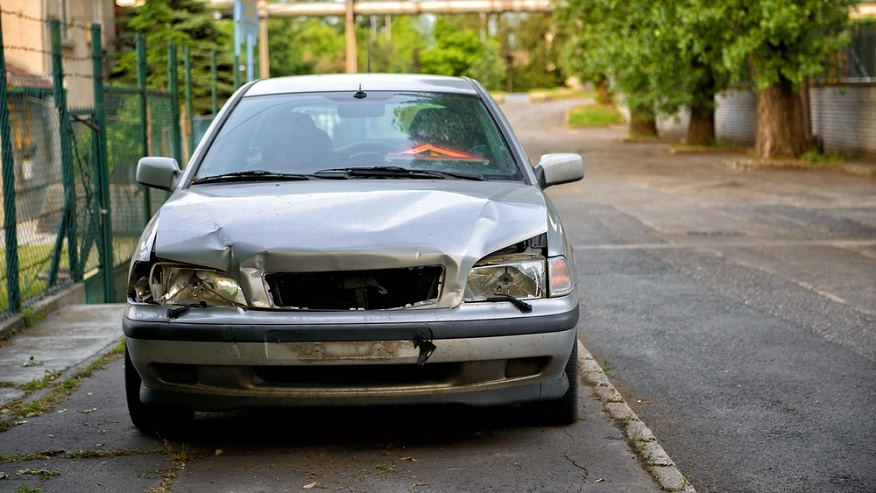What are the signs that indicate my car might be junk?
8 min read
Is your trusty car showing signs of wear and tear that make you wonder about its future on the road? It’s essential to recognize the subtle indicators that your car might be heading towards the junkyard. From strange sounds to unexpected breakdowns, your vehicle often drops hints about its overall health.
In this guide, we’ll cover the simple signs that indicate it might be time to bid farewell to your four-wheeled companion. So, buckle up as we navigate through the common signals that tell you it’s more than just a hiccup – your car might be trying to tell you something important.
Unusual Noises
Ever heard your car speak in strange sounds? Those mysterious noises might be its way of saying, “Houston, we have a problem!” Let’s break it down:
Common Unusual Noises:
Cars aren’t meant to be percussion instruments. Unusual noises can be a red flag. Here’s a quick guide to what your ears might be telling you:
1. Knocking Sounds:
Imagine your engine tapping a secret code. Knocking noises may mean trouble brewing under the hood.
2. Grinding Noises:
If your car sounds like it’s auditioning for a horror movie, there could be issues with the brakes or transmission. Not a sound you want to hear.
3. Squealing or Clunking Sounds:
Cars aren’t ballerinas; they shouldn’t be twirling or clunking. These sounds might point to problems in the suspension or steering.
Frequent Breakdowns
Keep your ears tuned, and if your car starts sounding like a rock band warming up, it might be time for a check-up!
Ever felt the frustration of your car deciding to take an unscheduled nap on the roadside? Frequent breakdowns are more than just a nuisance; they’re like surprise guests overstaying their welcome. Let’s break it down:
1. Inconvenience and Cost:
Frequent breakdowns aren’t just inconvenient—they’re like unexpected bills for a car spa day. You end up spending more time at the mechanic than on the road, and those repair bills? They add up faster than you can say ‘roadside assistance.’
2. Impact on Daily Life and Safety Risks:
Imagine being late for a crucial meeting or having groceries in the backseat on a hot day, and suddenly your car decides it needs a break. Beyond inconvenience, frequent breakdowns pose safety risks, especially if they happen at inconvenient times or in less-than-ideal locations. It’s not just about the hassle; it’s about staying safe on the road. It’s not safe to drive a junk car, while on the road safety should be your first priority. It’s recommended to sell your car, you can consider car removal sydney service for more convenience.
High Repair Costs

Ever felt like your car’s repairs are playing a never-ending game of catch-up with your wallet? High repair costs can turn your trusty vehicle into a financial burden. As we dive in, consider this: fixing your car shouldn’t feel like an endless pit.
Beyond Value: When the repair bills start piling up and seem to outweigh your car’s actual value, it’s a sign. Cars, like everything else, have a limit to their worth.
Costly Repairs: Think about it this way: if fixing your transmission costs more than your car’s resale value, it might be waving a red flag. Major repairs, like engine or transmission issues, can be the tipping point. When your car becomes a regular at the repair shop, it’s time to weigh your options.
Rust and Corrosion
Rust and corrosion, like unwanted hitchhikers, can sneak up on your car, quietly causing trouble. These troublemakers aren’t just eye-sores; they’re like silent saboteurs threatening your ride’s strength. When rust and corrosion join the party, it’s a game-changer for your car’s structure.
How They Mess with Your Car’s Strength:
Rust and corrosion weaken the metal, making it less sturdy. Imagine your car’s body like a superhero suit; rust is like Kryptonite, slowly chipping away at its power.
Where to Keep an Eye Out:
- Wheel Wells and Fenders: Check where your wheels hide. Rust loves hanging out here.
- Undercarriage: Sneaky rust likes the bottom. Crawl under your car and peek.
- Doors and Trunks: Give your doors and trunk some love – Rusty’s favourite hiding spots.
Signs of Trouble:
Bubbling Paint: If the paint’s acting like it’s on a boiling stove, rust might be underneath.
Flaky Metal: Little flakes of metal waving hello? Rust is throwing a party.
Remember, catching rust early is like stopping a villain before they wreak havoc. So, keep an eye out, and your car will thank you with many more smooth rides.
Decreased Fuel Efficiency
Ever notice your car sipping more fuel than it used to? Well, it might be trying to tell you something important about its age. As cars get older, they often become less fuel-efficient. Wondering how to keep an eye on this without a degree in car mechanics? Here’s the lowdown:
- Age and Efficiency: Like us, cars can lose some pep in their step as they age. The older they get, the more likely they are to burn through fuel faster. It’s a natural part of the ageing process for our four-wheeled friends.
- Monitoring Tips: Keep it simple. Track how many miles you’re getting per gallon. If that number starts to slide, it’s a sign your car might be feeling its age. Regular maintenance and paying attention to changes in fuel efficiency can help you catch issues before they become gas-guzzling dramas. If your junk car isn’t worth keeping then sell it to Cash for Cars Wollongong services.
Persistent Fluid Leaks
Ever spotted mysterious puddles under your car? Fluid leaks are like your car’s way of whispering, “Houston, we’ve got a problem!” Don’t shrug them off; they might be signalling something serious. Here’s the lowdown in plain Aussie speak:
Fluid Leaks: Unseen Troubles Revealed
- Indicative of Serious Issues: Think of fluids like your car’s lifeblood. Leaks? It’s like your car’s way of saying, “I’m not feeling so good.” Don’t ignore it.
- Common Fluids and Where to Check: Keep an eye out for oil, coolant, and brake fluid leaks. Look under your car, especially near the engine, radiator, and brake lines. If there’s a patch resembling a mini rainbow, it’s time to investigate.
Warning Lights
Ever noticed those glowing symbols on your car’s dashboard? They’re like your car’s way of sending an SOS. Dashboard warning lights are like tiny alarms, and understanding them can save you from bigger troubles down the road.
Dashboard Warning Lights: Decoding the Signals
1. Significance:
- These lights are your car’s silent messengers, warning about potential issues.
- Ignoring them is like pretending your car isn’t trying to tell you something crucial.
2. Common Warning Lights:
- Check Engine Light: It’s like your car’s “health check” light. If it’s on, your car needs attention.
- Battery Light: Indicates issues with your car’s charging system.
- Oil Pressure Light: Warns about low oil pressure, a vital signal for your engine.
Understanding these lights is like learning your car’s language – a conversation you don’t want to miss.
Mileage Milestones
Mileage isn’t just numbers on your dashboard; it’s a story your car tells. As your faithful companion rolls through the years, it leaves footprints in miles. Let’s decode this odometer tale.
Relationship Between Mileage and Lifespan: Your car’s odometer is like a heartbeat monitor, reflecting its journey. Higher mileage generally means more wear and tear. Imagine it as the wrinkles on a well-loved face; each mile is a mark of experience.
Mileage Milestones: There are points on this mileage highway where issues tend to hitch a ride. Around 100,000 km (60,000 miles), problems might start waving. By 200,000 km (120,000 miles), it’s like your car is whispering, “I’ve seen a lot; maybe it’s time for a break.” Pay attention; your car’s telling you its story.
Difficulty Starting
Ever found yourself turning the key, only to be met with a reluctant engine? Difficulty starting your car is like its way of coughing and saying, “Hey, I need attention!” Here’s the lowdown on what it could mean and what you can do about it:
1. Significant Issues:
Starting troubles aren’t just morning grumpiness; they might signal underlying problems. It could be a tired battery, a weary starter motor, or even fuel system issues. Ignoring this can lead to more headaches down the road.
2. Simple Tips for a Smooth Start:
If your car hesitates to start, don’t panic. First, check if the battery terminals are clean and tightly connected. If that doesn’t work, give the ignition system a breather—turn the key, wait a few seconds, then try again. If the problem persists, it’s time for a friendly chat with your mechanic.
Lack of Safety Features
Your car’s features play a crucial role. Let’s explore why modern safety is more than just a luxury and why your old car might be missing out.
- Safety Matters: In today’s fast-paced world, safety isn’t just a buzzword; it’s a necessity. Cars with advanced safety features are designed to protect you and your loved ones.
- Outdated Safety: Picture your car as a time traveller stuck in the past. Older models often lack vital safety advancements present in today’s vehicles, leaving you vulnerable on the road. From airbags to anti-lock brakes, these features can make a world of difference in an emergency.
- Upgrade for Peace of Mind: Considering a newer car isn’t just about style; it’s about embracing a safer ride. Upgrading ensures you’re equipped with the latest safety tech, providing peace of mind every time you hit the road. Your safety matters – make it a priority!
Inspecting Your Car: A Quick and Easy Checklist
Is your car trying to tell you something? Keep it in top shape with this simple checklist tailored for Aussies.
Checklist:
- Listen Up: Turn off the radio and listen for any unusual sounds. A happy car purrs; strange noises might mean trouble.
- Spot the Leaks: Look under your car for any puddles. Oil, coolant, or other leaks can be a red flag.
- Bright Lights: Ensure all your lights work—headlights, brake lights, and turn signals. Being visible on the road is crucial.
- Fluid Levels: Pop the hood and check oil, coolant, and brake fluid levels. Low levels can lead to big problems.
- Tire Talk: Examine your tires for wear and tear. Bald spots or uneven wear may signal alignment issues.
- Brake Check: Test your brakes in a safe spot. Squeaks or a soft pedal might mean it’s time for a checkup.
- Wipers and Washers: Don’t forget the small things. Check wipers and windshield washer fluid for clear visibility.
- Battery Health: Ensure your battery terminals are clean. A well-maintained battery means a reliable start.
- Belts and Hoses: Look for cracks or fraying on belts and hoses. These keep your engine running smoothly.
- Dashboard Duty: Pay attention to warning lights. Ignoring them could lead to costly repairs.
Keep your wheels rolling smoothly with this easy checklist. Regular checks mean a healthier, happier car on Aussie roads!
Conclusion
In conclusion, recognizing signs that your car might be on its last legs is crucial for both your safety and financial well-being. Whether it’s strange noises, frequent breakdowns, or escalating repair costs, being attentive to these indicators can save you from potential hazards. Prioritise your safety, stay informed, and consider alternatives when your faithful vehicle starts showing these warning signs.







